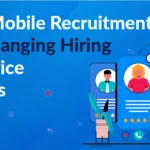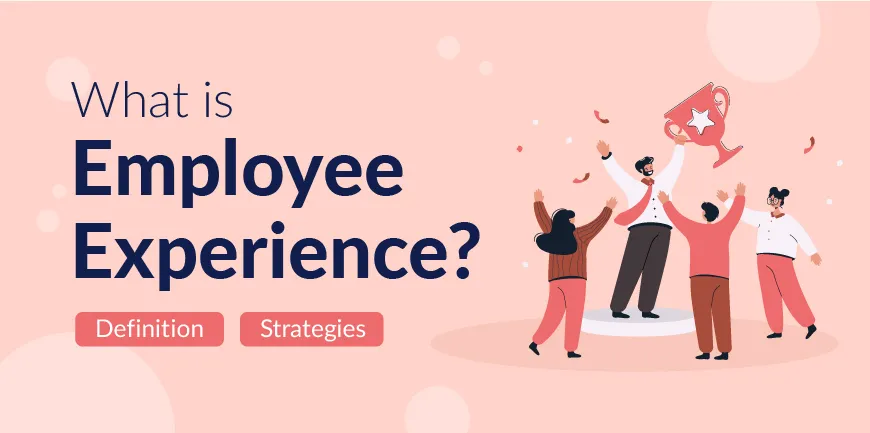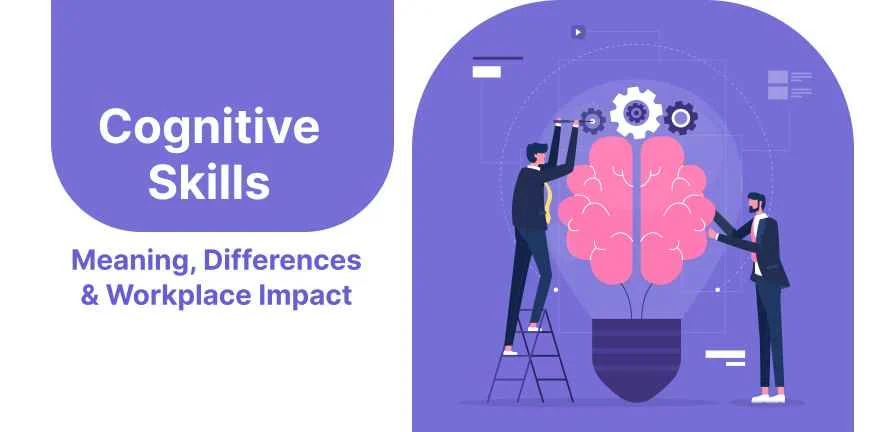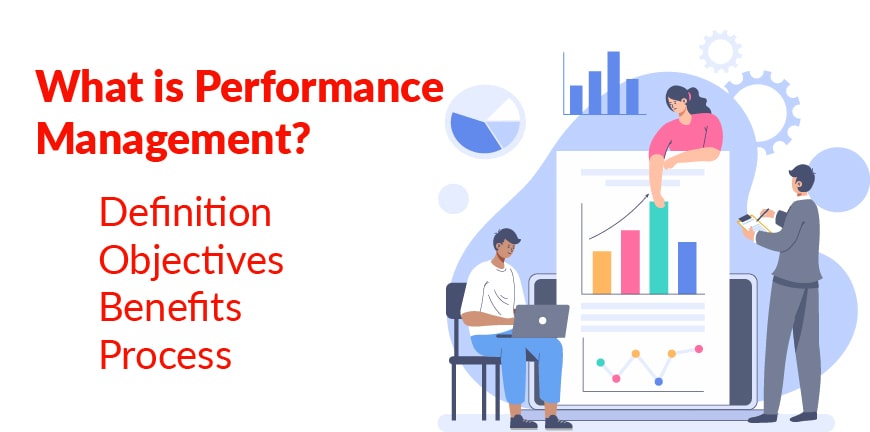
How Mobile Recruitment Apps Are Changing Hiring in Service Sectors
03/10/2025
What is a performance management cycle?
06/10/2025- What is Employee Experience?
- What are the Key Stages of Employee Experience?
- Why Employee Experience Matters?
- What are the Core Elements of a Positive Employee Experience?
- How to Improve Employee Experience?
- How to Measure Employee Experience?
- What are Examples of Employee Experience?
- What are the Trends shaping Employee Experience in 2025?
- FAQs- Frequently Asked Questions
Employee Experience has been and should be a priority in the workplace. Why? How does it make a difference to your organisation? When organisations are mindful of employees’ needs, employees tend to communicate actively without hesitation, respond more effectively, and work more collaboratively to help achieve organisational goals. And with such employees, the chances of your organisation thriving are also higher. But what can businesses do to ensure a positive employee experience? That’s what we’ll be listing out in this comprehensive employee experience guide. The definition and strategies to improve employee experience.
What is Employee Experience?
Employee experience refers to the interactions, experiences, and other encounters they face in the workplace throughout their journey within an organisation. Where does employee experience start? It’s during their recruitment. This continues through their onboarding, regular workdays, training sessions, recognitions, and ultimately, offboarding.
A positive employee experience is not solely about how satisfied an employee is with their job; it is also about how they feel about their work environment. There is a lot more to it. It’s also about how an employee feels about the workplace, their peers, the support they receive during their time there, whether they feel appreciated for their work or not, and how their mindset aligns with the organization’s goals.
What are the Key Stages of Employee Experience?
Seven key stages make up the entire employee experience lifecycle.
1. Brand attraction
You must have, at one point, walked past an organization and thought, “I wish I worked for them.” The employee lifecycle begins when they notice a brand, wish to work for it, and due to the reputation it must have held. Building a strong brand that effectively communicates its values, mission, and vision is crucial for attracting top talent.
2. Recruitment
This begins with the initial job posting and your website, which demonstrate the purpose of your brand. To attract the best candidates, you must develop a solid EVP. An EVP covers everything that you are willing to offer to employees that makes you a good employer. Checking job sites, understanding social media, and actively providing feedback can help enhance your recruitment process.
3. Onboarding
This stage covers their first day. This is the time they take to get up to speed with tools, systems, processes, and their job duties. This is a short period, but it is extremely crucial as employees form a perception about the brand. New hires may require training and support for up to a year to get up to speed.
4. Development
A good organization invests in training its employees and encourages them to improve, thereby increasing their satisfaction with their work. They enable employees to choose the skills they want to develop and the training they desire. This stage also encompasses the productivity of employees, their team interactions, and their training and promotion processes.
5. Retention
By this stage, employees are fully integrated into the company. Now it’s about ensuring they are productive while they are happy and satisfied with their jobs. To ensure the same companies have engagement surveys to gather feedback from them, and act on what they find from these surveys. Additionally, organizations should prioritize retaining their existing staff over hiring new ones, as it’s less expensive to do so.
6. Exit
Naturally, no employee can stay in an organization forever, and at some point, they will leave. This could be either retirement, a new position, or other personal reasons. To ensure you are ultimately professional, you must conduct exit surveys to understand what your employees are feeling and to gauge their overall experience. From this input, you can make modifications where necessary to improvise your exit process.
7. Advocacy
In an ideal world, the employee experience across the whole lifecycle should be so good that every exiting employee will remain an active brand ambassador. Employees whose exit experience is positive are nearly three times as likely to recommend their organization as those with an unhappy or neutral experience.
Why Employee Experience Matters?
The importance of employee experience extends far beyond how an employee feels or is treated within a company. With the right employee experience management, organizations can reap significant benefits.
1. Employee satisfaction
Employees feel much more satisfied with their work when they have a positive experience working in the organization.
2. Better productivity
A positive employee experience motivates employees not just to excel in their own job role but also instills in them a desire to contribute positively to the organization’s goals.
3. Higher employee retention
Employees who are happy in the workplace tend to stay with the organization for longer periods. With better retention rates, there is significantly less disruption to productivity. This saves money on recruitment and hiring.
4. Easy recruitment
If your existing employees are satisfied, it means they have had a positive experience. This makes it easy to attract new potential talent. Positive word of mouth from existing employees can help new employees get off to a strong start.
5. Better customer experience
Happy employees can create a positive experience for your clients and customers. Customers can appreciate it when an employee genuinely speaks well of their organization.
6. Decreased absenteeism
When employees are happy at work, they also tend to show up more frequently and regularly. The decreased absenteeism eliminates slow and unproductive work.
What are the Core Elements of a Positive Employee Experience?
The actual employee experience starts after an employee accepts a job offer. And this is when organizations must put in extra effort to make them feel welcomed. Why is this important? To ensure they are engaged and committed to the company. Here are some key elements of a positive employee experience.
- Seamless and smooth onboarding: To ensure they settle in well or feel comfortable, you can assign a work buddy. This will help in their smooth transition.
- Inclusive work culture and environment: Give all employees importance and opportunities, and a welcoming workplace culture that respects all perspectives and celebrates diversity.
- Clear, reasonable expectations: Tell your employees exactly what you expect from them right from the beginning.
- Provide growth opportunities: offer them training and other opportunities not just for their personal growth, but also so that they can work at their full potential.
- Prioritize accountability: Give employees a chance to take responsibility for their actions and work. Include them when you are making decisions.
- Communicate openly: Your employees must feel comfortable speaking to you openly and honestly about any concerns they may have at the workplace. To ensure this, you must encourage open communication channels.
- Recognition: Notice their hard work and appreciate them when they deserve it.
- Team Activities: Organize fun, bonding activities frequently to keep the environment fresh and friendly.
- Offer flexible work options: Consider accommodating individual needs and personal circumstances.
- Be a leader, not a boss: Lead by example. This is the most effective way to create a positive and motivated work environment.
How to Improve Employee Experience?
There are nine ways to enhance employee experience
1. Focus on performance management
Managers must listen actively. Whether it’s about a concern an employee has or is looking for training support, managers must respond aptly. Making employees feel valued encourages them to open up about their concerns more freely, allowing you to address them quickly.
2. Set clear expectations for employees
During their entire tenure at your organization, right from joining to exiting, the employee experience must align with the firm’s culture, purpose, and values. AI tools can help improve communication and send personalized messages to employees to enhance their experience.
3. Make better use of technology
Integrate tools and systems properly. Take the help of the IT guys. This will allow employees to work on a unified platform rather than switching from one to the other. This can increase their productivity.
4. Use visual aids and infographics
Use visuals to show how the proper integration of the right tools and systems can help ease the workflows and enhance the digital employee experience.
5. Have open communication channels and encourage feedback
The leaders in your organization must be accessible to employees. To help with this, there have to be direct communication channels. Dedicated messaging channels where leaders can update or post anything informal for employees and receive feedback from them help employees feel trusted, wanted, and valued.
6. Develop a strong company culture
Ensure that your company’s values and vision are communicated well. This can motivate employees to work towards a goal and foster a sense of belonging.
7. Employee recognition programs
Have recognition programs a few times a year and celebrate the achievements of your employees. This can be through rewards or other forms of acknowledgement.
8. Make hybrid workspaces a priority
Employees must be given the option to work comfortably in the office as well as remotely. To ensure this, you must include flexible seating arrangements and have technology that makes collaboration easy.
9. Career development opportunities
Provide development opportunities that allow employees to upskill as well as grow. Mentorship, online courses, or in-house training sessions can be incorporated into this approach.
How to Measure Employee Experience?
There are numerous ways to measure employee experience, including organizing surveys, establishing feedback channels, and utilizing HR technology.
1. Surveys
Through frequent surveys, like quarterly or bi-annual surveys, you can collect feedback about how employees feel about the work culture, environments, managers, and support. Their loyalty can be measured by asking them how they rate your company and whether or not they would recommend it to others.
2. Interviews and discussions
Collect feedback from employees who are leaving or exiting your firm. The input should include their reasons for exiting the organization and what they think needs improvement.
3. 360-degree feedback
You must know what employees at various levels have felt about working with the organization, including colleagues, superiors, and other subordinates.
4. Track key HR metrics
Make a note of how many employees are leaving the company every year to understand your retention rates. Monitor how often employees are taking leave and note how many employees are promoted. All of this gives an idea of how Measure employee output and efficiency to assess effectiveness.
5. Use technology the right way
Employee experience in HR can be measured through technology. Software with specialized tools can help in creating surveys, gathering qualitative and quantitative data, and analyzing data. This kind of software also comes with performance management tools that help you bring out the best in your professionals and tailor their development.
6. Dashboards
With HR systems, you can create dashboards that can give you a full view of employee experience metrics and allow you to monitor the trends.
What are Examples of Employee Experience?
Employee experience is essentially what employees think of the workplace, culture, and environment. Some of the key employee experience examples are-
1. Flexible work arrangements
Offering flexible work options includes allowing remote and hybrid work setups or flexible schedules.
2. Personalized development opportunities
Offer learning and development programs, mentorship, and promote them internally, demonstrating your commitment to employees’ personal growth.
3. Prioritize work-life balance
Place importance on work-life balance by offering benefits such as unlimited paid time off, parental leave, and wellness programs.
4. Recognition programs
Organize recognition programs to appreciate your employees’ hard work and commitment towards organizational goals.
5. Transparent communication channels
Make sure to foster an environment where your employees can talk freely about issues they are facing at work. This can be through feedback, one-on-one sessions etc.
6. Employee wellness
Pay attention to the mental health of employees. Have on-site fitness centers, provide stress management resources to show your commitment to employees’ mental health.
7. Creating a fun, collaborative environment
Make your office environment lively and maybe slightly colourful in some corners to keep the vibe upbeat and positive.
What are the Trends shaping Employee Experience in 2025?
- Simplifying chaotic work by streamlining difficult, time-consuming processes resulting in better productivity.
- AI solutions must not be viewed as a replacement for employees but as a tool that can help employees work better.
- Make sure employees are paid fairly and provided with opportunities to grow while they work for you.
- Employee experience must be positive at every step of the way for an employee. This includes their onboarding, recruitment, and exit.
- Instead of hiring new employees, focus on training the ones the ones you already have. And promote them to better roles.
- Including and hiring individuals from diverse backgrounds is a must to create a work culture where everyone is treated equally and is given the same opportunity to thrive.
FAQs- Frequently Asked Questions
1. What is employee experience in HR?
Employee experience is a holistic talent management approach that organizations take to help ensure that their employees have the support they need to succeed and thrive at work.
2. What are the key elements of employee experience?
Organizational culture, leadership and management, work environment, technology and tools, learning and development opportunities, recognition and rewards, and work-life balance.
3. What is the difference between employee experience and employee engagement?
Employee experience refers to the employee’s journey within your organization, from their very first interaction through onboarding and daily work routines. Employee engagement is an ongoing part of the employee experience.
4. What are the benefits of improving employee experience?
Improving employee experience leads to higher productivity and innovation, increased employee retention, reduced absenteeism, enhanced company reputation, and improved customer satisfaction, creating a positive feedback loop that benefits both employees and the organization.
5. What are examples of employee experience strategies?
Encourage employees to contact you, another human resources professional or their designated supervisor when they have a question or a concern. Make sure that employees understand the best ways of communicating various types of information.
6. What role does technology play in employee experience?
Technology plays a pivotal role in shaping and enhancing the employee experience journey by streamlining processes, fostering communication, and providing employees with the tools they need to thrive in their roles.
Contact Us For Business Enquiry

Rajkumar Shanmugam
Rajkumar Shanmugam is the Head of HR at ALP Consulting, bringing over 19 years of comprehensive HR leadership experience across India and international markets. His expertise spans talent acquisition, employee relations, performance management, compliance, and HR transformation. Rajkumar has a proven track record of driving people-centric initiatives, enhancing workplace culture, and aligning HR strategy with business goals. With extensive experience in US staffing operations and global mobility, he continues to lead organizational excellence through innovation and employee engagement.




